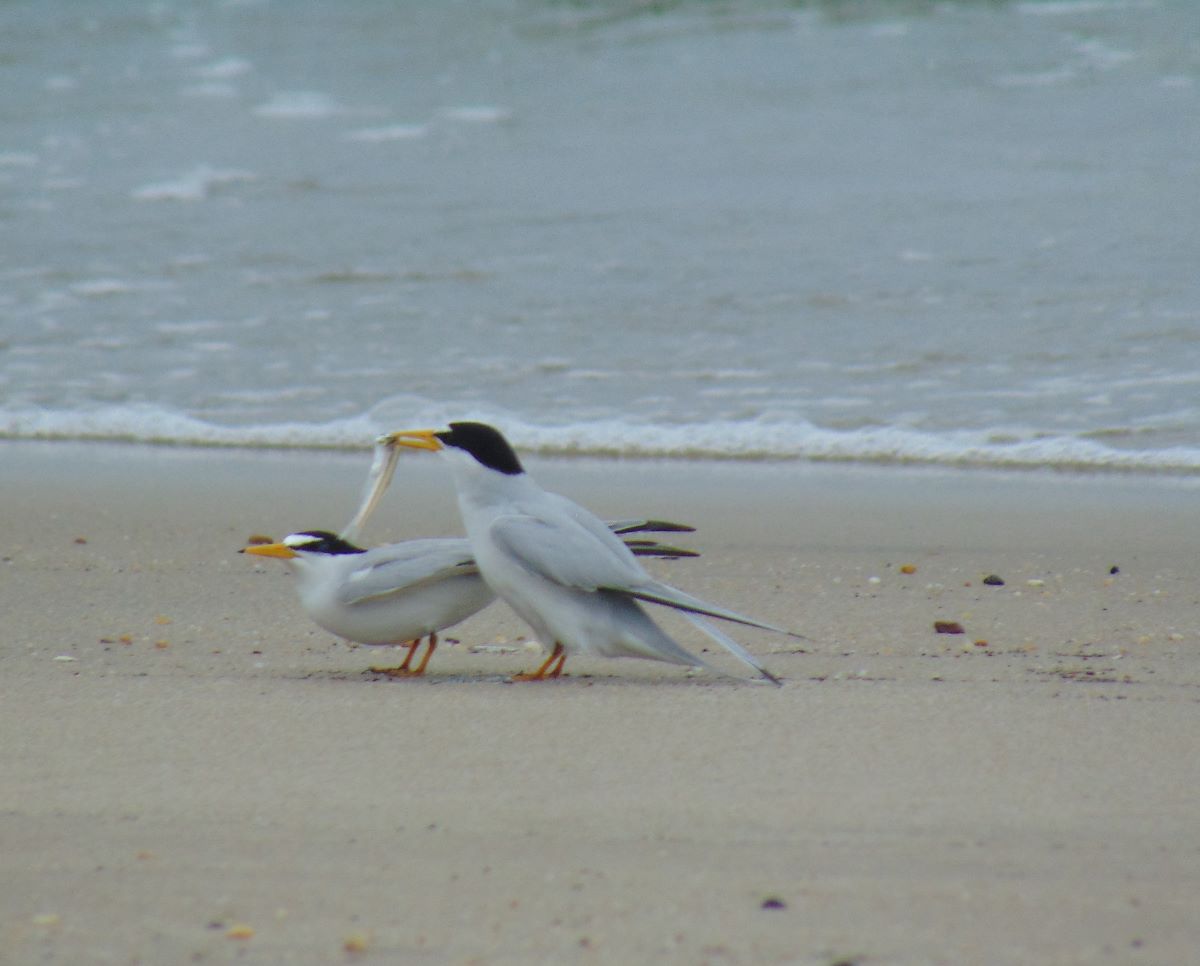Least terns are the smallest species of tern in North America, with an orange-yellow beak and mask-like black markings on the head. The Beach-Nesting Bird Program monitors the population and productivity of least terns in Delaware.

Least Terns are a migratory species and typically arrive to Delaware’s beaches in May or June. These birds form colonies of more than one pair of birds to protect their nests. They generally migrate south by September.
Historically, least terns have had large colonies at Cape Henlopen State Park, Delaware Seashore State Park and Fenwick Island State Park.
In recent years, the largest colony has been documented at Fowler Beach, in the Prime Hook National Wildlife Refuge. The large area of sandy nesting habitat is perfect for this beach-nesting species.
As least terns begin arriving in Delaware, the DNREC Division of Fish and Wildlife monitors their activities.
Areas that have been identified as suitable nesting habitat are closed to provide disturbance-free zones where terns can nest. Colonies may be protected by using electric fences to keep out mammalian predators like red fox.
DNREC biologists monitor breeding behavior of these terns alongside other beach-nesting birds such as American oystercatchers and piping plovers, until the last chick has left for migration.
The state has tracked nesting pairs of least terns since 1965, but productivity rates can be hard to determine for a colony-nesting species like least terns.
Historic trends in the number of least tern breeding pairs (Figure 1) and the productivity of this species (Figure 2) have varied over time.
The high peaks of least tern pairs in the 1980’s and 1990’s can be attributed to the large least tern colonies that used to be present at Delaware Seashore State Park (Figure 1). There are no records of least terns nesting at this park since the early 2000’s, due to vegetation changes and increased human activity.
In Delaware, the productivity of least terns fluctuates year to year (Figure 2). Productivity can be measured as the number of fledglings (chicks that are able to fly and survive on their own) divided by the number of pairs.
Because of varying survey effort and the difficulty of monitoring a colony species, the only accurate productivity rates can be calculated from 2016 onwards. Least tern productivity has been low in recent years.
The program is investigating the causes for these fluctuations.

The historic colony at Cape Henlopen State Park did not make a return in 2023, possibly due to changes in suitable habitat. Least terns continue to use the beaches at Cape Henlopen state park for resting and feeding, and some breeding behavior was observed but no nests were found in 2023.
However, the colony at Fowler Beach retained large numbers of terns and increased the number of breeding pairs. Due to better protection against predators, more fledglings were recorded at this site in 2023 than in previous years.
In the coming seasons, the Beach Nester Project hopes to better understand the habitat requirements for least terns and increase protection from predators for this vulnerable species.
Related Topics: atlantic ocean, beach nesters, beaches, birds, conservation, delaware bay, fish and wildlife, least terns, shorebirds, wildlife